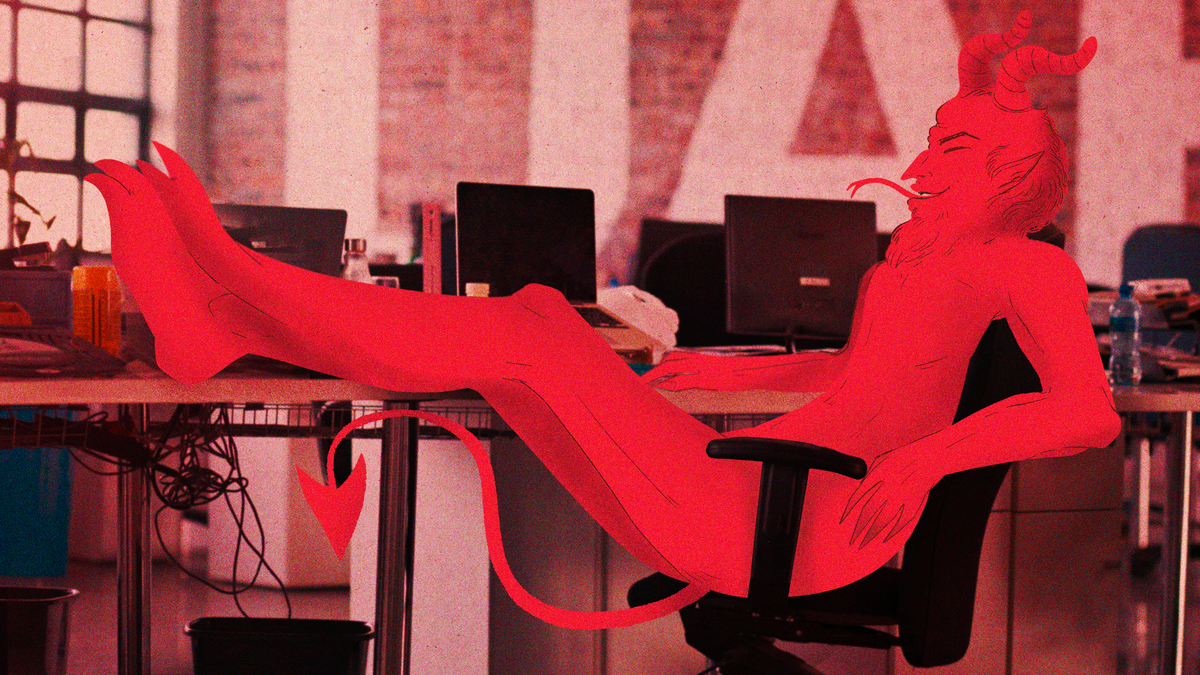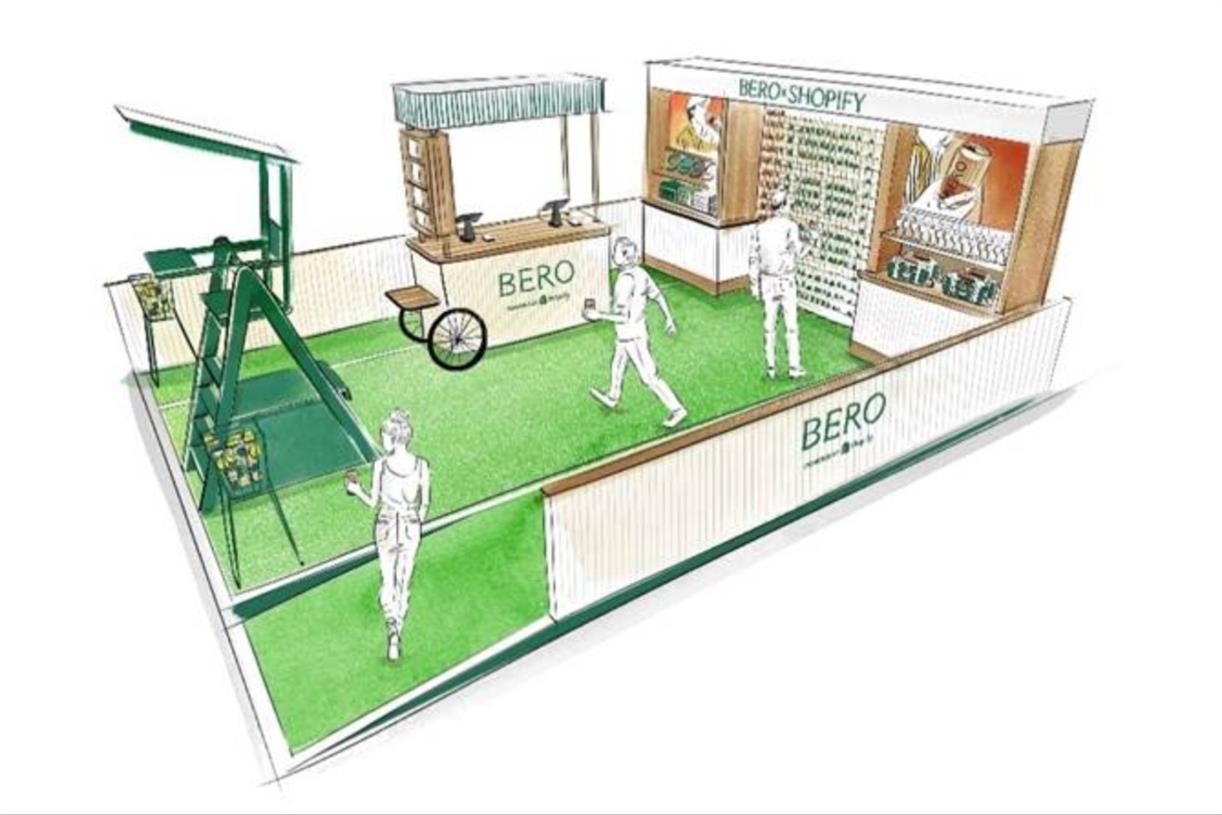The Seven Different Types of Jerks at Work (and How to Deal With Them)
We’ve all dealt with our share of jerks at work. It might be the colleague who sucks up to the boss, the person who manages to do none of the work while taking all of the credit, or the...

We’ve all dealt with our share of jerks at work. It might be the colleague who sucks up to the boss, the person who manages to do none of the work while taking all of the credit, or the boss that wants to micromanage every aspect of your day. Whatever your work jerk looks like, one thing is for certain: They can make life a living hell.
As it turns out, even work jerks have a type. As Tessa West, an associate professor of psychology at NYU and author of the book Jerks at Work: Toxic Coworkers and What to Do About Them, explains, work jerks tend to fall into at least one of seven categories.
There’s the kiss-up-punch down jerks, the credit stealers, the bulldozers, the free riders, the micromanaging bosses, the neglectful bosses, and finally, the gaslighters. All of these jerks can manage to make your life a living hell, albeit in some very different ways.
The good news is that if you know what to look for, you can spot these jerks and find ways to minimize their damage. As West notes, some of the red flags to look for aren’t inherent to the work jerks themselves, but to the organization, as a bad work culture can turn just about anyone into a jerk.
“Learning to read those signs early is really critical,” West said. “It’s not just within the person, but within the culture, as well.”
Kiss-up-kick-downers
One of the earliest red flags with kiss-up-kick-downers is a constant need to compare themselves with others. This could be the big things, such as comparing monthly sales numbers, or it could be inane things, such as who gets the most freebies.
“Another thing they often demonstrate early is they can read the room,” West said. “They very quickly figure out who has power and who does not.” When it comes to power, this includes the more obvious players, such as the boss, but it also includes the more informal players, such as the co-worker everyone turns to for advice. Kiss-up-kick-downers identify these people and suck up to them as a way of protecting themselves from any complaints by making sure that the people with power are on their side.
Dealing with kiss-up-kick-downers requires finding allies—people who are well-connected and can offer perspective on your problem. It also helps to try to identify others who have been targeted by the kiss-up-kick-downers. If you bring this up with your boss, you want to be very specific about how the kiss-up-kick-downer’s behavior is affecting productivity and morale.
Credit stealers
Credit stealers are opportunistic people. Often, their strategy is to seek out a well-functioning team, one that works well together. The weakness in such teams is that it’s hard to parse out who exactly does what, with a lot of “we” language being used during presentations. “They are able to go in and take credit because the team isn’t good at allocating credit,” West said.
If this team has a hands-off boss, the credit stealer will often find ways of being especially noticeable, banking on the fact that because the boss isn’t involved in the day-to-day operations, they won’t know enough to see through the credit stealer’s tactics.
“Behind the scenes, they take advantage of what we sometimes call invisible labor,” West said. These are all the day-to-day tasks that are important for the success of the project, but don’t always get recognized. “The credit stealer will go in and take credit for that invisible labor when no one else is claiming it.”
With credit stealers, it’s important that teams find ways of giving credit where credit is due, such as identifying who contributed what during any presentations to higher-ups.
Bulldozers
With bulldozers, what you see is what you get. These are the people that get their way, no matter what, flattening everyone else in the process. There are usually two types of bulldozers: The ones you always put on mute during a Zoom call and the ones who are doing the bulldozing behind the scenes.
The first type of bulldozer tends to be bad at reading the room. They won’t stop talking until everyone else caves to what they want. As West notes, this type of behavior is often allowed to continue because the bulldozer has something that everyone needs, such as a skill with a particular software that no one else knows.
The second type of bulldozer is a bit more subtle. “They tend to be very seasoned and well-connected,” West said. “Their talent is in shutting down group outcomes that they don’t like by questioning the process.” To do this, they go to people in power, and get them to question the decision that is about to be made.
In order to deal with a bulldozer, it’s important to think about strategies for making sure your voice is being heard, and to avoid any situations where you have to rely on a bulldozer to get things done.
Free riders
According to West, this is the most common type of jerk at work, especially if there is any type of teamwork involved. “Their main skill is that they tend to be charming,” West said. “They’re often attractive, they’re funny, and we like having them around. They don’t act like jerks, they just act like really nice people who are overwhelmed and just don’t have their life together.”
Free riders are very good at finding strong, hard-working teams and then figuring out a way to fly under the radar, divvying up their work among the entire team, so that no one person feels the pain of their slacking.
Groups that are particularly vulnerable to a free rider tend to be conscientious, cohesive, and in the habit of giving collective rewards. Free riders know these teams will get the work done no matter what, which means others will pick up their slack, while they also try to keep the peace.
“Their presentation skills are great,” West said. “They’ll offer to give the presentation that the team spent 30 hours on, which creates in the boss’s mind this association between them and all the hard work, when in reality they didn’t do any of the groundwork behind the scenes.”
With free riders, it’s important to find a way to have regular fairness checks, which includes an accounting of who does what. As West notes, sometimes free riders do what they do simply because they are disengaged from the job, not because they have zero interest in doing work. In these cases, free riders can be coaxed back into doing their job by identifying which tasks they might enjoy or be good at.
Micromanagers
Everyone has dealt with a micromanager at one point or another. These are the bosses that make your life hell by getting involved in every aspect of your job, no matter how minor, disrupting everything in the process. With micromanagers, although the intent is to help, their efforts often backfire, slowing you down in the process, and leading to a lower quality of work.
“They’re working the hardest and getting the least done,” West said. “A lot of their micromanagement is coming from a chronic anxiety that they have yet to figure out how to regulate effectively.” As West notes, a lot of micromanager bosses are that way either because they have micromanager bosses themselves, or they were never given training on how to be an effective manager. “They were promoted because they were good at their old job, not because they can manage.” Work culture can also contribute to this problem, such as a culture of no forgiveness.
Dealing with a micromanager boss means having to find ways to calm this anxiety while also setting boundaries. This can include be specific about what boundaries you need in order to do your work effectively, while also scheduling regular check-ins at a specified time.
Neglectful bosses
Neglectful bosses are usually characterized by inconsistency. They may go weeks or months not knowing what you are up to, only to swoop in suddenly, wanting to know everything you have been doing. “The warning sign you have a neglectful boss is this chronic feeling of uncertainty you have, where you never know when they are going to show up and wreak havoc,” West said. “They’re really inconsistent in their behavior, and it’s tough to predict.”
Neglectful bosses can happen at any stage in your career. They may be neglectful because they don’t have management experience, because they have too much on their plate and are overwhelmed, or because they don’t have clear messages from their bosses on what they need to prioritize.
To deal with a neglectful boss, West recommends making small, specific asks; offering to take work off their plate; or seeking the help you need from an expert who isn’t your boss.
Gaslighters
For the other six types of jerks, West recommends trying to understand what their motivations are. When it comes to gaslighters, she does not recommend this strategy. “Gaslighters are the scariest, most pathological jerks to deal with at work,” West said. “They are lying to create an alternative reality, and the reason they are doing that is because there is something they are trying to hide.”
Gaslighters could be trying to cover up illegal or unethical behavior, or they might be trying to hide signs of their own incompetence. Either way, they do this by isolating people, whether by making them feel like they are part of something special, or by slowly destroying their self-worth. Gaslighters are very good at covering their tracks, which means they often do this in private, leaving no paper trail of their behavior.
In order to deal with a gaslighter, West recommends building up your network of people you can rely on. When you feel ready to start opening up about what is going on, start small, by asking people for their general experiences working with the gaslighter.

 Tfoso
Tfoso 
































